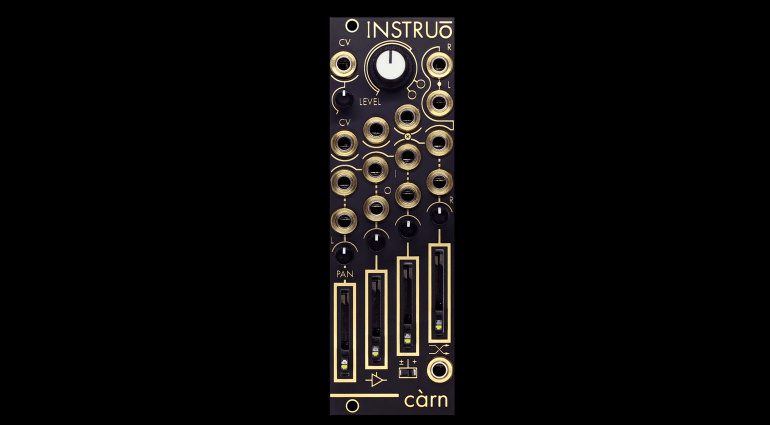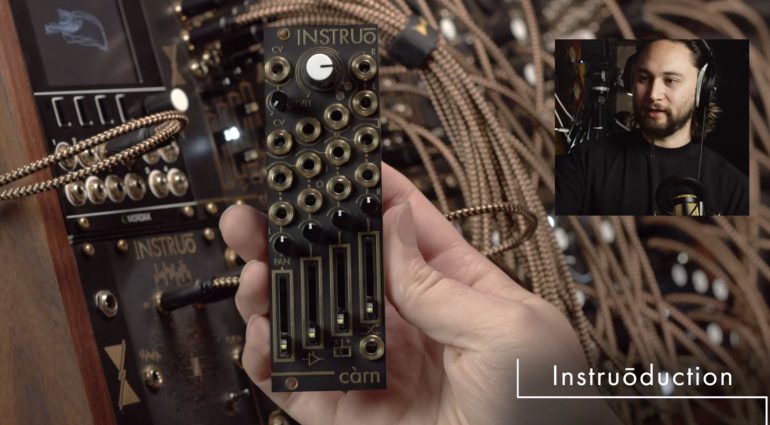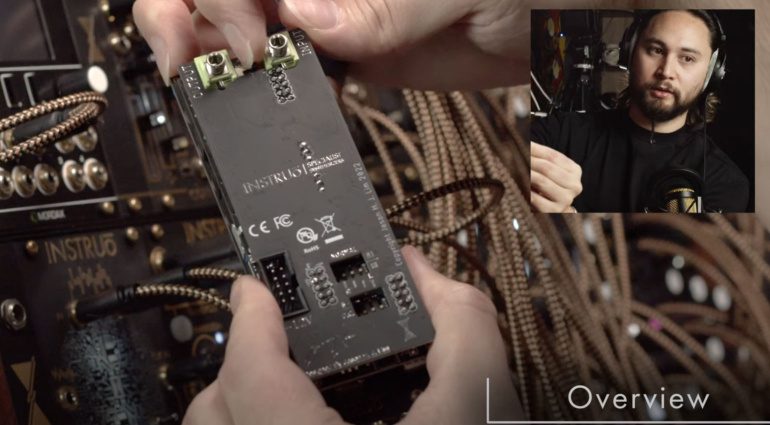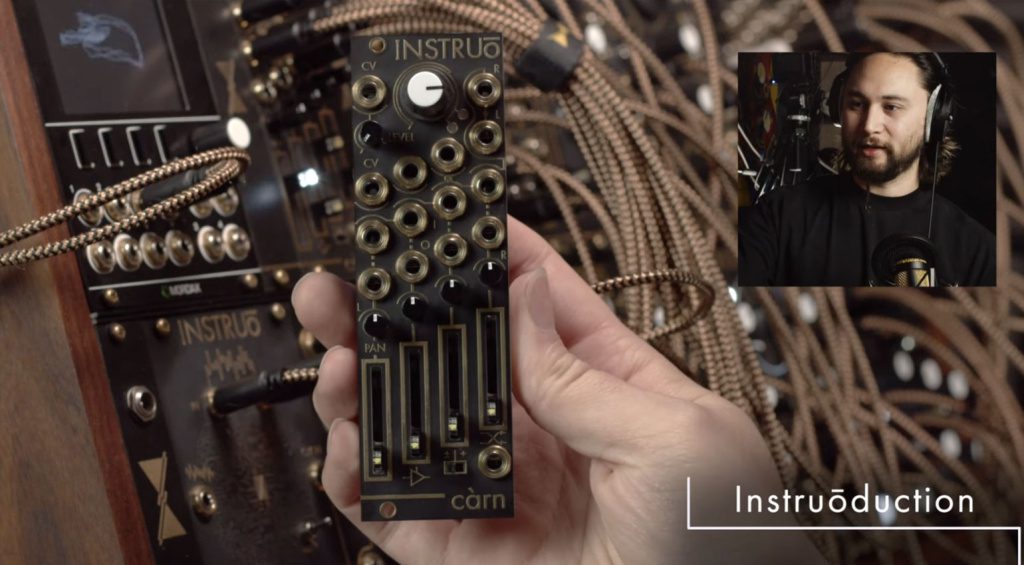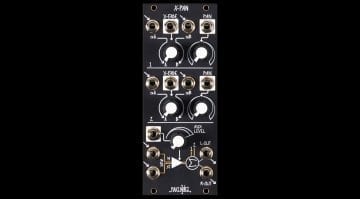cárn from Instruo: All analogue mixer module
A deliciously offset four-channel signal processor and mixer of audio and CV with voltage-controlled panning, stereo VCA, ring modulation and cross fading.
cárn
I’m enjoying the straightforward look and vibe of this module. Despite the additional functionality, you feel that you know what’s going on just by looking at it, which is not always something you can say about Instruo modules. There are four channels, with volume sliders, panning knobs and inputs and outputs – got it! But, of course, it’s never going to be as simple as all that.
It starts off as a summing mixer with built-in stereo VCA. On the back, it has a secret connection to other stereo Instruo modules for a bit of seamless expansion. On the output, there’s an optional limiter for a nice bit of signal softening or fully saturated distortion. From there, the features get a bit dense.
The mixer is available with CV-controlled constant power panning. As a VCA, it can be two-quadrant linear, four-quadrant ring modulation or final stage stereo. You can crossfade signals and each channel has its own output with limiting. It’s the ability to an uber-utility that turns cárn into a useful and vital part of a patch. Mixing is always useful, but being a VCA can impact all sorts of signal, both audio and CV. You can use saturation to confuse and confound waveforms, or mix your modulations. You could set up the perfect drum bus and modulate the panning all over the place. I have a couple of Mutable Veils, which are four-channel VCAs in a very similar format that are always in use. cárn would easily fit that role and offer a load more fun while it’s at it.
Each channel to its own
Each channel has its own thing going on. Channel 1 features the CV-controlled panning, Channel 2 is a more traditional VCA with CV control over the level. Channel 3 has a unipolar/bipolar switch which can turn the fader into an attenuverter, or you can use it as a Ring Modulator with the modulator going into the CV input. And finally, Channel 4 gains an input at the bottom, making it a two-channel crossfader. Or, if the extra bits are unpatched, then it mixes.
I like the fact it has a master output level, and the trick is that this is also the stereo VCA. It has its own CV input and attenuator. This gives you the power to voltage control how that submix feeds into the rest of your system. I’m also intrigued by the rear panel stereo connection and wonder how big I can make the mixer by cascading them into each other.
cárn will be £379, and the website suggests sending them an enquiry about availability. There’s an hour and a half of deep detail in the Instruo cárn video (below).
You are currently viewing a placeholder content from YouTube. To access the actual content, click the button below. Please note that doing so will share data with third-party providers.

 3,8 / 5,0 |
3,8 / 5,0 | 